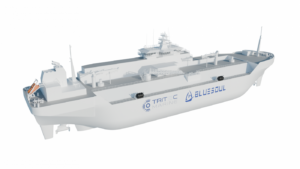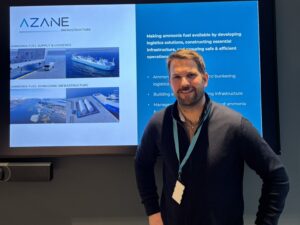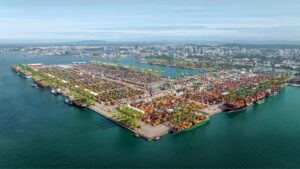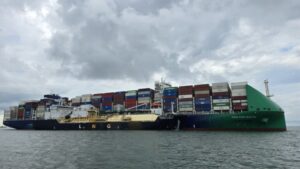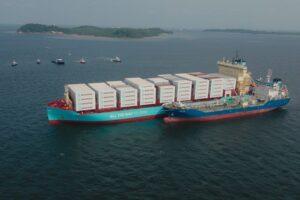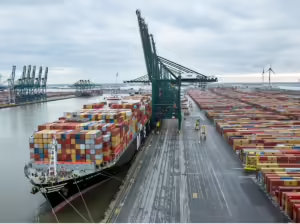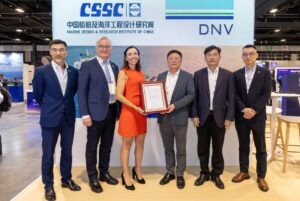SABRE consortium win ABS AiP for ammonia bunkering vessel design
The SABRE consortium has received approval in principle (AIP) from the US classification society ABS for an ammonia bunkering vessel design.
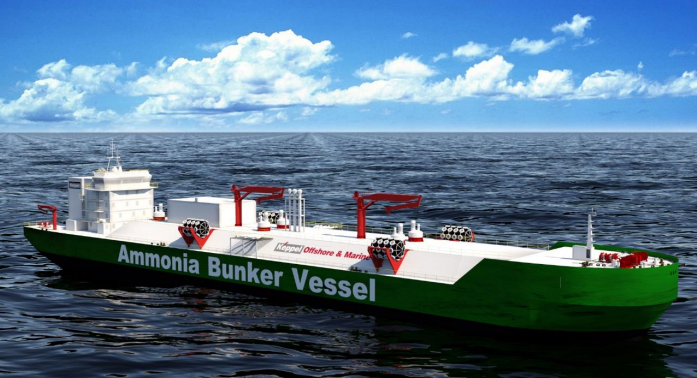

The consortium, comprising A.P. Moller – Maersk A/S, Fleet Management Limited, Keppel Offshore & Marine, Maersk Mc-Kinney Moller Center for Zero Carbon Shipping, Sumitomo Corporation and ABS was recently welcomed two new partners — Japanese shipping Kawasaki Kisen Kaisha (K Line) and Maritime and Port Authority of Singapore (MPA).
Related Article
During the Singapore Maritime Week on 6 April, a memorandum of understanding (MOU) was signed by the consortium with K Line and MPA to develop the ammonia bunkering ecosystem at the Port of Singapore, the largest bunkering port in the world.
This follows a feasibility study jointly launched by the consortium in March 2021 to develop an ammonia bunker supply chain in Singapore. In the past year, the consortium identified potential ammonia supply sources and indicative costs, as well as undertook the preliminary design and cost estimation for critical infrastructure, such as ammonia storage tanks and bunkering vessels, leading to the AiP from ABS for the bunker vessel design.
Specifically, the study assumed the development of ammonia bunkering in two stages, i.e. pilot stage before scaling up to commercial stage, based on a set of ammonia bunker demand projections.
With the addition of the two new members, the parties will build on the current findings and begin development works to establish an integrated supply chain, with the goal to commence ammonia bunkering by 2030.
“We see ammonia as an important future fuel to contribute to the realization of a decarbonized society. Through the close collaboration among like-minded partners in the past year, we have gained not only AiP for the ammonia bunkering vessel but immense insights, both technical and commercial, on the key drivers and challenges to establish an end-to-end supply chain for ammonia bunkering,” Koji Endo, General Manager of Energy Division, Sumitomo Corporation, commented.
“Leveraging on these insights, and with the addition of strong partners like MPA and K Line to the MOU, we are confident that we can meaningfully progress the development works and target to be among the first to commence ammonia bunkering business in Singapore.’’
“We believe the collaboration with leaders in maritime industry under this MOU will contribute to develop ammonia bunkering in Singapore and the attainment of approval in principle for ammonia bunkering vessel is a remarkable milestone in our journey to decarbonise global shipping,’’ Yukikazu Myochin, President & CEO, Kawasaki Kisen Kaisha, said.
The consortium partners intend to continue to seek cooperation with various stakeholders of the maritime industry and relevant Singaporean ministries and agencies to realize the world’s first ammonia fuel supply chain.
These developments are said to be in line with the International Maritime Organization’s (IMO) initial strategy to halve greenhouse gas (GHG) emissions within the shipping industry by 2050 compared to 2008 levels.
Ammonia, which does not emit CO2 when burned, is expected to be one of the most promising alternative marine fuels that have the potential to make significant contributions to reducing GHG emissions in the shipping industry.
Related Article
Follow Offshore Energy’s Green Marine on social media:


